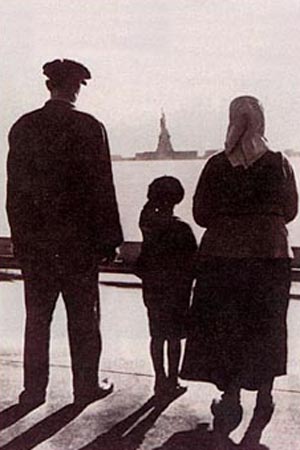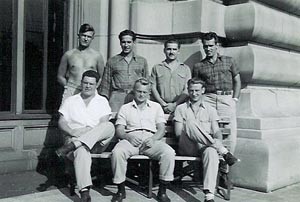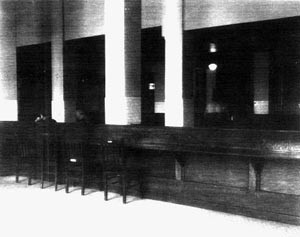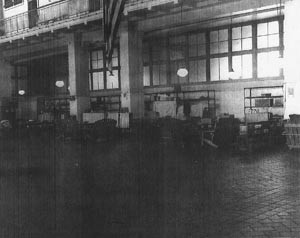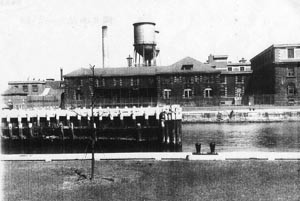Ellis Island, New York City, New York
INTERNMENT CAMPS
The most famous and ironic of the temporary detention facilities was Ellis Island where millions of immigrants were welcomed to America from 1892 until 1924. A mostly artificial island of approximately 27 acres, Ellis Island is located in New York Harbor not far from the Statue of Liberty. (See the National Park Service’s historical summary of Ellis Island.)
Until recently, there was little information on Ellis Island’s seven year history as a World War II detention site in historical literature, on the internet or at Ellis Island itself. What was available, particularly regarding the German American experience, was largely wrong or simply omitted.
For example, the National Park Service’s highly regarded manuscript Confinement and Ethnicity: An Overview of World War II Japanese American Relocation Sites by Jeffery Burton, et al. (1999) states that Ellis Island was basically a detention center for German and Italian nationals awaiting their hearings and that most were transferred or released within 1 to 4 months. (p. 380) Ellis Island performed many more functions during World War II, now reflected accurately on the Ellis Island Immigration Museum’s timeline, which indicates that 7000 thousand men, women and children of German, Japanese and Italian ancestry (including Enzo Pinza) were detained on Ellis Island, some for years. German immigrants were there awaiting hearings, awaiting transfer to other internment camps, awaiting deportation and departing for Germany to be repatriated and exchanged for Americans in Germany.
Internees tried to continue life as well as possible despite their incarceration and the lack of control. One artistic inmate recounts the well-meaning Easter bunny’s ill-fated visit to the island. The facility is remembered by those who were there, including women and children, as one of the worst —bad food, bad medical care, overcrowding, lack of exercise and unhealthy conditions, including rats and urine-soaked mattresses.
(3 Dec 1943, 30 May 1945, and 29 Mar 1946 reports on the facilities at Ellis Island, discuss the haste and confusion surrounding a mass deportation and the inadequacies of the facilities for long-term detention. 29 Feb 1944 list of civilian enemy aliens of German ethnicity in custody on Ellis Island, New York Harbor, New York)
By the end of the war, six exchange voyages had departed from Ellis Island carrying approximately 2650 German immigrants and their American-born children back to Germany on Swedish vessels, MS Gripsholm and the MS Drottningholm.
After the cessation of hostilities with Germany, DOJ camps were progressively closed. President Harry Truman issued Presidential Proclamation 2655 required all “dangerous internees” currently in camps to be deported and many remaining internees were transferred to Ellis Island where they were incarcerated for years fighting deportation and pleading for release. On 24 Jan 1947, 156 internees held on Ellis Island signed a petition, asking for release, rather than enforced deportation/
Ellis Island Life
- Internee Exercise area at Ellis Island Eberhard E Fuhr Collection
- Families in the Ellis Island Dining Hall Arthur D. Jacobs Collection
- Ellis Island, – Some internees awaiting release at Ellis Island 1947 Eberhard E. Fuhr Collection
Ellis Island Facilities
- Ellis Island Visitation Area 1945 National Park Service Photo
- Ellis Island German Internee Family Cooking Area 1945 National Park Service Photo
- Ellis Island Ferry Slip 1947 National Park Service photo

